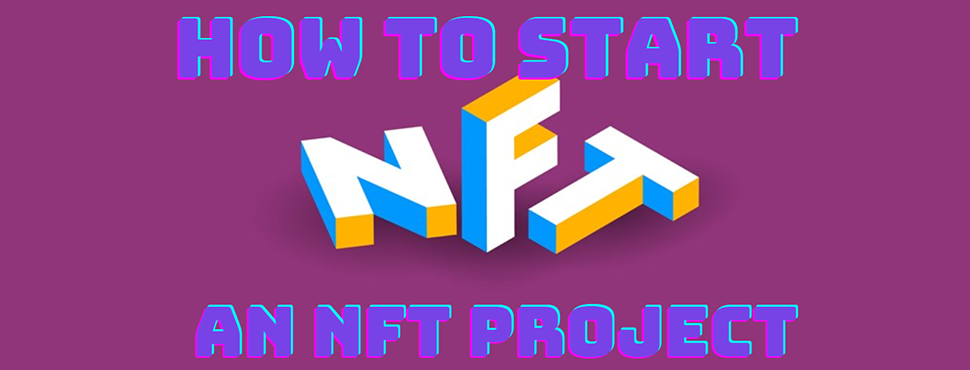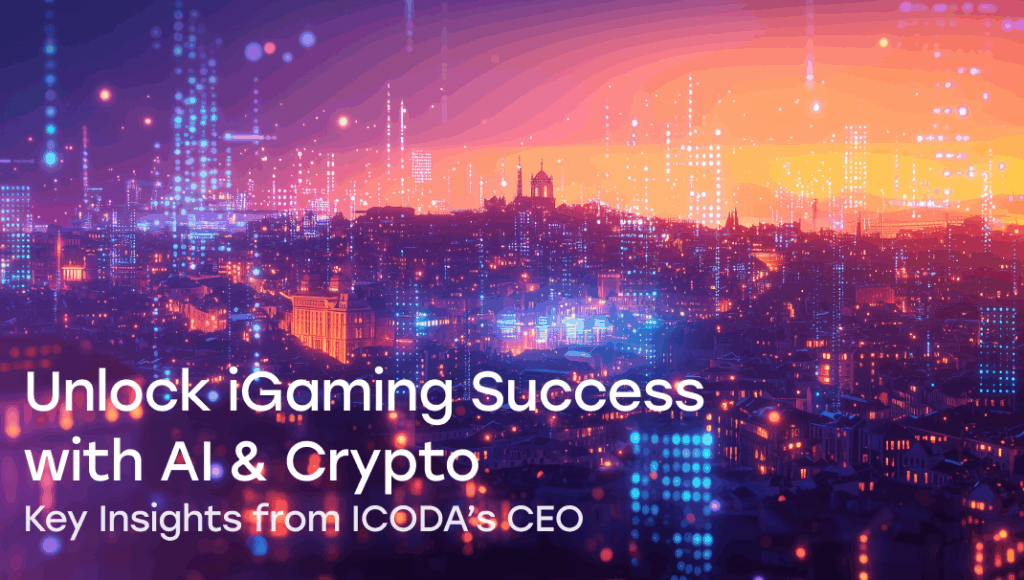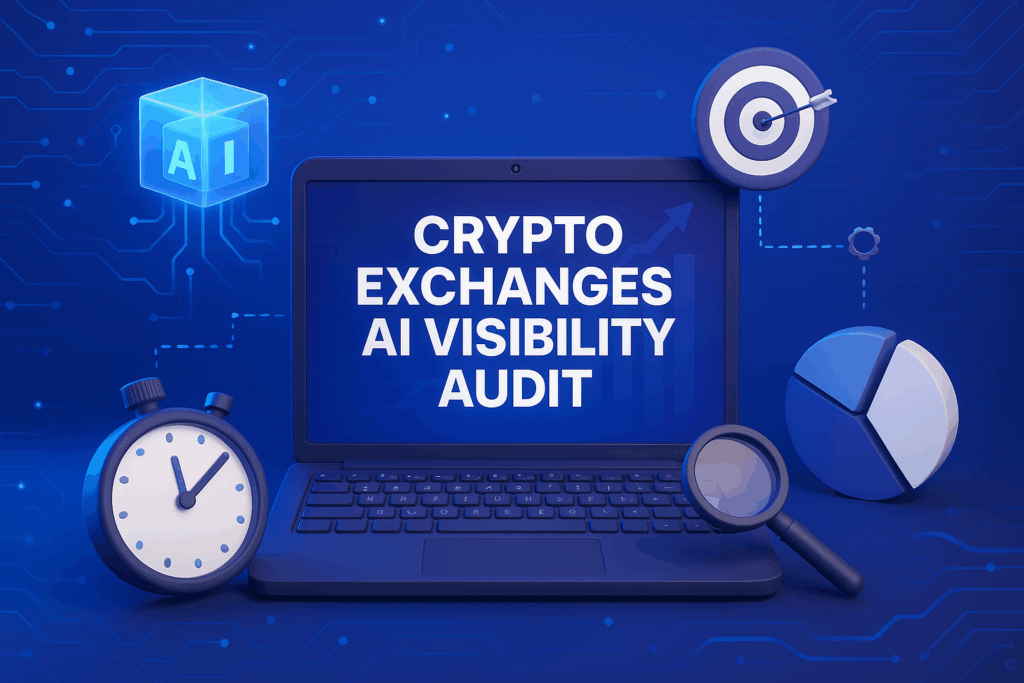share
How much work does it take to launch your own NFT collection? How many steps ahead should an artist think about, do they need a team and how to find followers? Here is an in-depth guide to the process of launching your own collection.
Defining the Concept and the Target Audience of NFT Projects
Everything starts with the basics, even in such a new segment as non-fungible tokens.
First—define the concept around which you will create your NFT story. It all depends on the initial data. Are you a working artist who wants to tokenize and sell your tangible works, or are you just building your collection in the digital world?
It is also necessary to work out possible product collaborations, expanding the uses of NFT not only as a single collection but also in the Metaverse, Web3, and DeFi.
Understanding the concept of the NFT project will help to make a selection on the next criterion—the target audience. This is a necessary action, as defining the target audience will make it easier to promote the NFT, make it more productive, and, most importantly: the target audience is the primary investors in the NFT project.
At this stage, you can also make a statement about the mission of your NFT: what goals you are pursuing and what story you will tell in your digital art. It is also appropriate to record this information in the Charter or Internal Code so that all creativity and concept are preserved and development follows this plan.

Human Resource Management, Determining the Optimal Strategy for NFT Collection
Determine the team needed for a full-fledged NFT collection release.
Of course, you can start out in the non-fungible token market alone if you are a maker artist and you want to limit your spending on minting. Or if you are knowledgeable enough about NFT to approach the process from the perspective of experience and unemotional trend analysis.
However, working without help can have a negative impact on the result, as technical and marketing actions are better delegated to professionals.
Optimal to start NFT would still be a combination of three people: artist + technical executor + marketer.
The team may consist of more professionals. It all depends on the initial technical parameters and the concept of development. If the NFT audience expands, it is also possible that members of the community want to become ambassadors for the NFT collection in the market.
There is also a third scenario in which the artist-creator acts as technical director, delivering his collection to the NFT marketplace. Then, when sales have already begun, a decentralized DAO community is created, which, based on the democratic distribution of voting rights, undertakes to manage the fate of the collection.
Technical Development
One of the most important points of the plan to enter the cryptocurrency market with your own non-fungible tokens collection is technical development.
Technical actions are the main point of the plan for non-fungible tokens collection implementation. All key decisions are made in the technical part of development, so when creating your own NFT project, the artist or his team must take all the actions within it responsibly.

White Paper and Tokenomics
Just like any other crypto, an NFT project aims to attract investment. Strategically it is necessary to record all ideas, concepts, mathematical calculations of tokenomics, and technical parameters in a White Paper.
This is the first thing a potential investor appeals to and a confirmation of the seriousness and responsibility to act on the part of the developers. WP can also help with the initial analysis and comparison of the NFT project’s positioning with its business model:
- How realistic the revenue generation calculations are,
- Whether the target audience is defined correctly,
- What the TSR should be confirmed.
White Paper can also include the Concept (Charter) drawn up in the first stage of development.
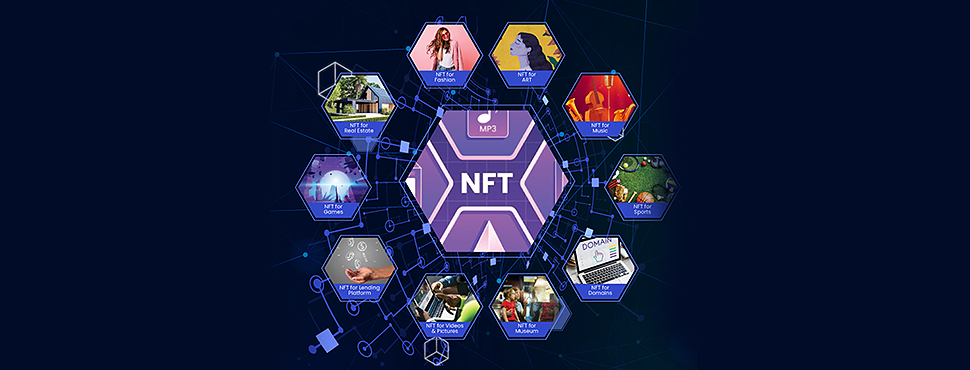
Tokenomics
Since we are talking about launching a rare, unique collection, an important role is given to the business plan and calculation of the tokenomics corresponding to the chosen concept.
In this point of creating and promoting NFTs, it is necessary to prescribe the exact figures of the token mint, the order of their distribution and the schedule of token minting, the conditions of additional issues, and possible variations in the types, design, and application levels of tokens.
NFT collections are unique objects, but, as for any market, there is a supply-demand ratio where the price depends on the number of submitted tokens to the market.
There is no need to ramp up token issuance to big six figures because chasing the number will reduce the uniqueness and price of the objects, making them in low demand, creating additional difficulties in creating image tokens, and expanding the amount of information that needs to be stored in the blockchain.
Plus, many use the issue number itself as an indirect marketing tool, choosing “nice” even numbers, such as 6666, 7777, 3333, 4444, 6969, 7171, and so on. The most common token issuance model is 10,000 NFT in a collection (this figure is relevant for digital image generation, where the unique properties of each new token are created from predetermined distinctive characters).
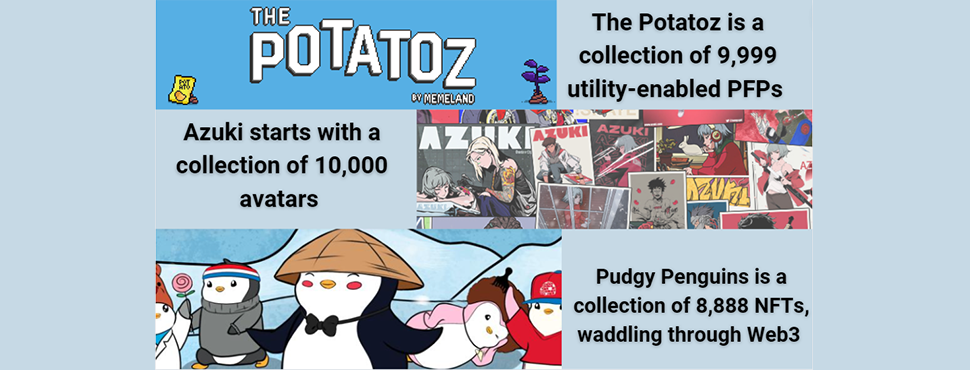
The order in which NFT tokens are distributed depends on the overall concept of the NFT project. Each company chooses its own ratio, but non-fungible tokens, like other participants of the crypto market, can be distributed to the first participants of the community as an airdrop, some tokens—to the winners of the exclusive price of the private sale to the team—as a marketing share, the majority—to the NFT marketplace.
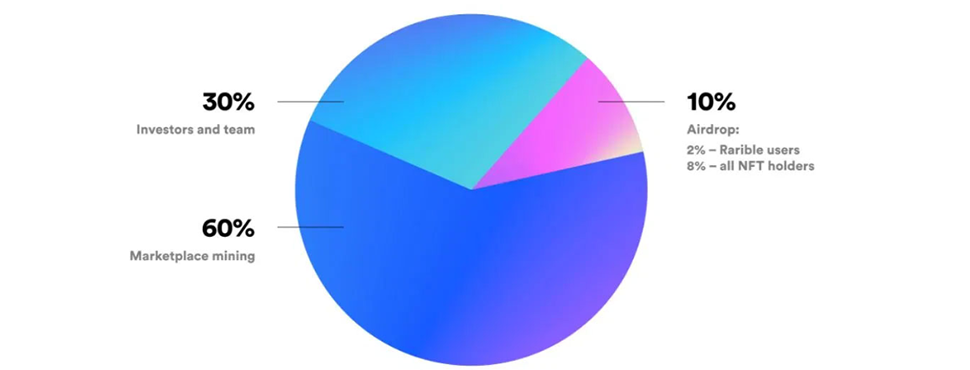
Within the total issue figure, there can also be their own sublevels, which divide the total collection gathered on one concept into tokens with rarer distinctions and a standard format. For example, you set the token issue to 6666 units and fix 90 distinctive features to compose combinations of three features per digital image. The entire number of 6666 units can be minted this way and have equal (almost) value to the community. But you can go another way: make some (e.g., 5555 units out of 6666) standard features and 1111 unique features with more attributes or attributes not used in most tokens. This separation of tokenomics by quality serves two functions: it makes the entire collection special, attracting the attention of a potential investor, and it raises the value of a portion of tokens by a rank higher.
White Paper and Tokenomicsan Example of Cryptopunks Token Distribution Policy
For example, let’s take a look at the history of the most famous NFT collection – CryptoPunks.
CryptoPunks is the first NFT collection that gained popularity. Larva Labs’ total token issue was 10,000 units and took place in 2017 on the Ethereum blockchain smart contracts.
These are small pixel-art images of people, zombies, and monkeys created on the standard ERC-20 (since the popular NFT technical standard ERC-721 did not yet exist at the time).
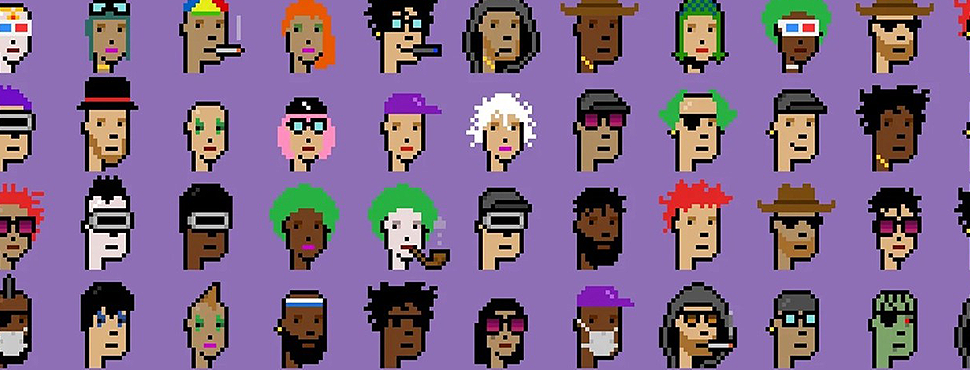
Larva Labs gave away a large portion of the collection—9,000 copies—to their investors as part of the airdrop phase of the NFT project, requiring only a gas payment for the Ethereum token issue.
All CryptoPunks portraits differ in number and set of distinctive features: one, two, or three attributes (masks, glasses, hairstyles, etc.) of 87 or no attributes at all (Genesis Punks).
Also, as part of the issue of 10,000 tokens, the creators at Larva Labs developed a gradation by species:
- The most common are humans of both sexes;
- The rarer ones are zombies and monkeys.
This also created distinctions that affected the price of different 10,000 tokens in the collection.
A sound approach to the issuance and a relevant topic made CryptoPunks an example for the entire cryptocurrency community and the progenitors of the 2021-2022 NFT boom.
CryptoPunks tokens reached a total trading volume of $2.92 billion at their peak value.
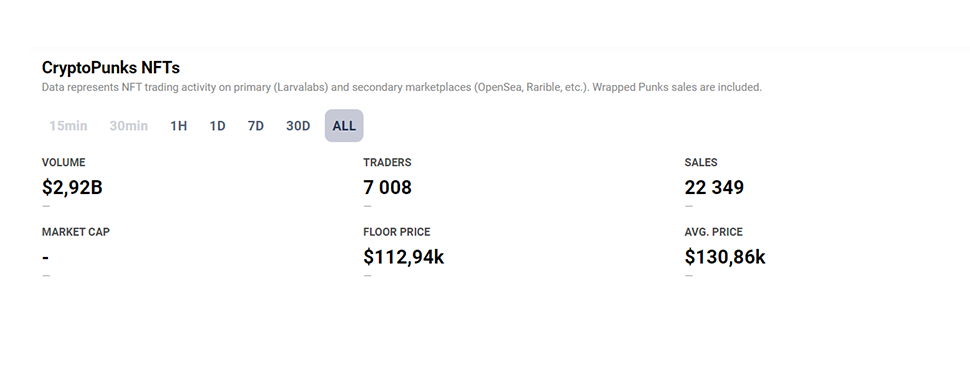
Roadmap and Development Timing
Of course, the ultimate goal of all launches is to make money and promote the idea. This applies to investors as well as to trading platforms and NFT projects themselves. And everyone involved in the trade needs to imagine their earnings (or losses) in the short, medium, and long term. On the basis of this representation, key decisions are made, and a strategy of action is chosen.
The NFT project roadmap, in this case, is a necessary tool to navigate the upcoming events and their impact on investment and profit growth.
For example, the NFT collection roadmap describes the development of its own Metaverse. It would be a digital virtual reality, presented in the form of its own planet, populated by inhabitants of different clans (whose avatars were just sold as NFT). And the first investors who supported the developer company’s minuscule tokens will receive the privileged rights of a resident of the Metaverse and a great value as an NFT.
Knowing this information, the investor will be interested in investing for the medium and long term because, in this way, more growth in the value of NFT-privileged resident avatars is possible.
Exactly such prospective opportunities, important developments within the development of one allocated startup, are published in the roadmap.
In addition, the customer roadmap at the same time can serve as an indicator of development problems or non-compliance with the timing by the team. If an investor sees that the pre-specified update points are not being met, there is a high probability of disagreements, financial losses, or a complete scam by the digital art collection issuer.
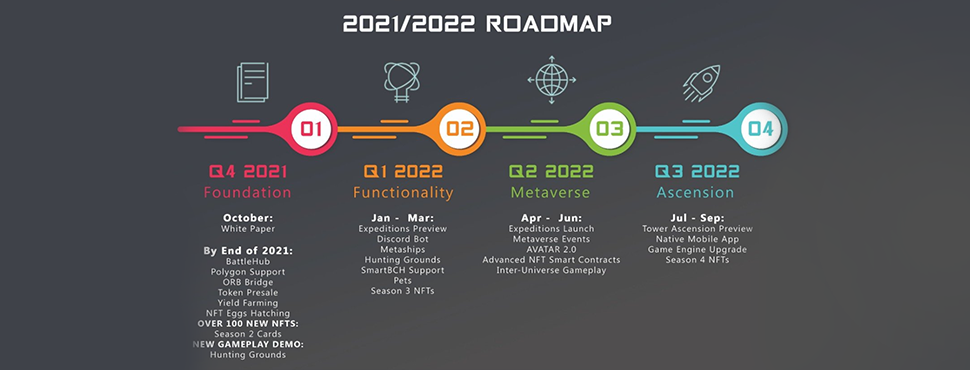
Choice of Blockchain
The main requirement for a blockchain for Nft issuance is the ability to set the necessary transaction and object parameters spelled out in smart programmable agreements – smart contracts.
The problems of Ethereum – the very first blockchain to offer such technology to the market: high gas fees, network congestion, and low scalability, in many, have prompted developers not to rely on convenient and ready-made ETH solutions but to engage in their own blockchain development. After all, not every cryptocurrency investor can pay a $30-120 fee per transaction, or about $500, to deploy a smart contract.
Blockchains BSC, TRON, Flow, Tezos, Polygon, and Solana tried to compete with Ethereum and pull some new NFT projects to their blockchain, including from the NFT sphere.
The new Solana and BSC succeeded most of all. The success of other blockchains in pulling NFT startups to their technology is relatively small, and their share in the development of the market is not only weighty.
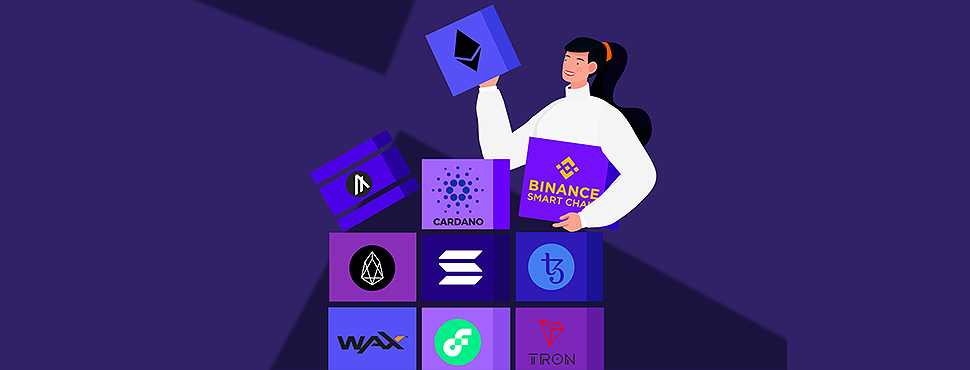
Which Blockchain Should I Choose?
When choosing a blockchain, the developer, first of all, consider the parameters important to him – NFT smart contracts, the cost of blockchain transactions, the security and availability of the code, the ecosystem of related applications, like adaptive wallets for storage and NFT marketplaces to implement NFT.
A final decision is up to you (according to your needs and plans). You can pay close attention to Ethereum: technologically and practically. Currently, the most commonly used standards are ERC-721, ERC-721A, ERC-4907, and ERC-1155, a huge advantage of which is also considered the compatibility of the Ethereum virtual machine (EVM) with the Binance Smart Chain (BSC) blockchain, which creates the precondition for rapid scaling and duplication (transfer) of the collection to another blockchain.

How Much Does It Cost to Run an NFT Project?
There is no single answer to this question. There are many factors that add up to the final budget of launching an NFT: the cost of issuance software and digitization of the physical collection, the salary of a team of employees, marketing costs, the cost of transactions on the selected blockchain and internal payments of NFT marketplaces. However, this is the case if a whole team of employees is involved in the promotion.
But in case the artist himself decides to spread his idea by digitizing his own products and selling them as NFT, it would be possible to limit the cost of mint NFT on the selected marketplace and internal commissions. In that case, the budget would be minimal, not including the cost of labor and time of the NFT creator himself.
Can I Create My Own NFT?
Yes, as you can see, the possibility of issuing your own NFT exists. To do this, you need to arm yourself with a small stock of cryptocurrency to pay for transactions in the blockchain and a share of experience and understanding of the specifics of the NFT market.
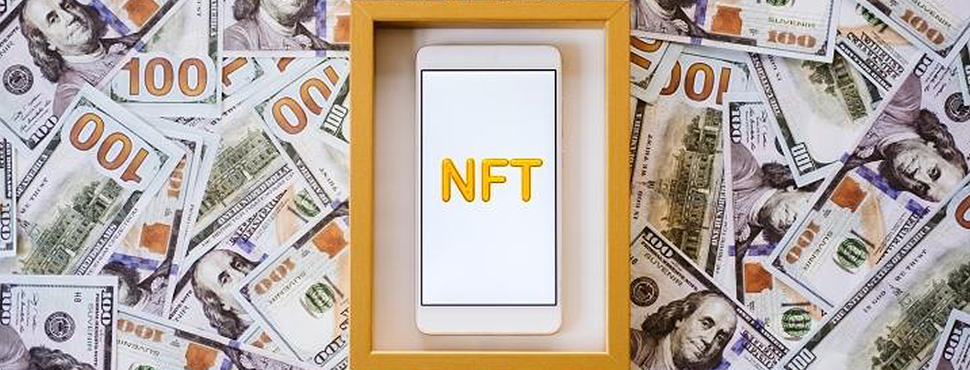
Successful NFT Project Has a Website and Boosted Social Networks
So, you have a ready NFT project concept, you’ve decided on the technical parameters, and you’ve chosen your blockchain. What’s the next step? Of course! It’s the creation of your own website and social networks.
Website
Register an original domain name and create a website that reflects your development concept. The site should be an open statement of all your work up to the time of its launch and the prospects for updates. Also, the site is the face of the company, looked at by thousands of users. Make it open, authentic, informative, and conceptual – it’s your reputation.
Social Media
Social networks that you should definitely take into consideration: Twitter, Facebook, Reddit, Discord, Telegram, TikTok, Instagram, and Medium. Briefly about the specifics of each network.
Twitter is an obligatory social network for every NFT project. It is recommended for announcements, announcements, and releases. High potential for audience growth and fast recruitment of the required number of subscriptions.
Facebook – is one of the largest social networks in the world. It is used for more extensive promotion both in terms of publishing corporate information and promotion by proving expertise, raising sensitive social topics, and transferring their solution to the concept of the NFT being created.
Discord is also a must-have social network for NFT projects. Most of the progressive cryptocurrency community, and especially non-fungible tokens, communicate and share information on this social network. So creating a loyal Discord community of potential investors and interested users is a high priority. This is the home of NFT – no Discord server – no home for your collection.
Telegram – a social network for posting news and project updates, announcements, and releases, as well as crypto market news, analytics, voting, etc., in TG channels.
Telegram and Discord have a lot in common: they are channels for creating one of the most important elements of a marketing campaign – the NFT community.
There are rules for creating a crypto community in Disсord or Telegram. Use them to improve communication between members:
– Fix a regular schedule for chat support. The stability of communication will confirm your serious intentions
– hire a chat manager to communicate, since even in the business of community support, it is important to have a professional support person
– create educational content to help the newcomer to the NFT market and SEO promotion
– set up a list of topics that are published as a matter of urgency: hacks, development issues
– distribute the roles in the community. If you can encourage activity, encourage by increasing social status on the social network
– decide on the bots for analytics and push news
– Make a list of the most popular questions and prepare answers to them so they are always presented as a concept.
TikTok – for viral videos and easy-to-understand content.
Medium – for great expert publications.
Reddit – for communication and discussion of current market topics.
Instagram – for professional content supported by visuals.
